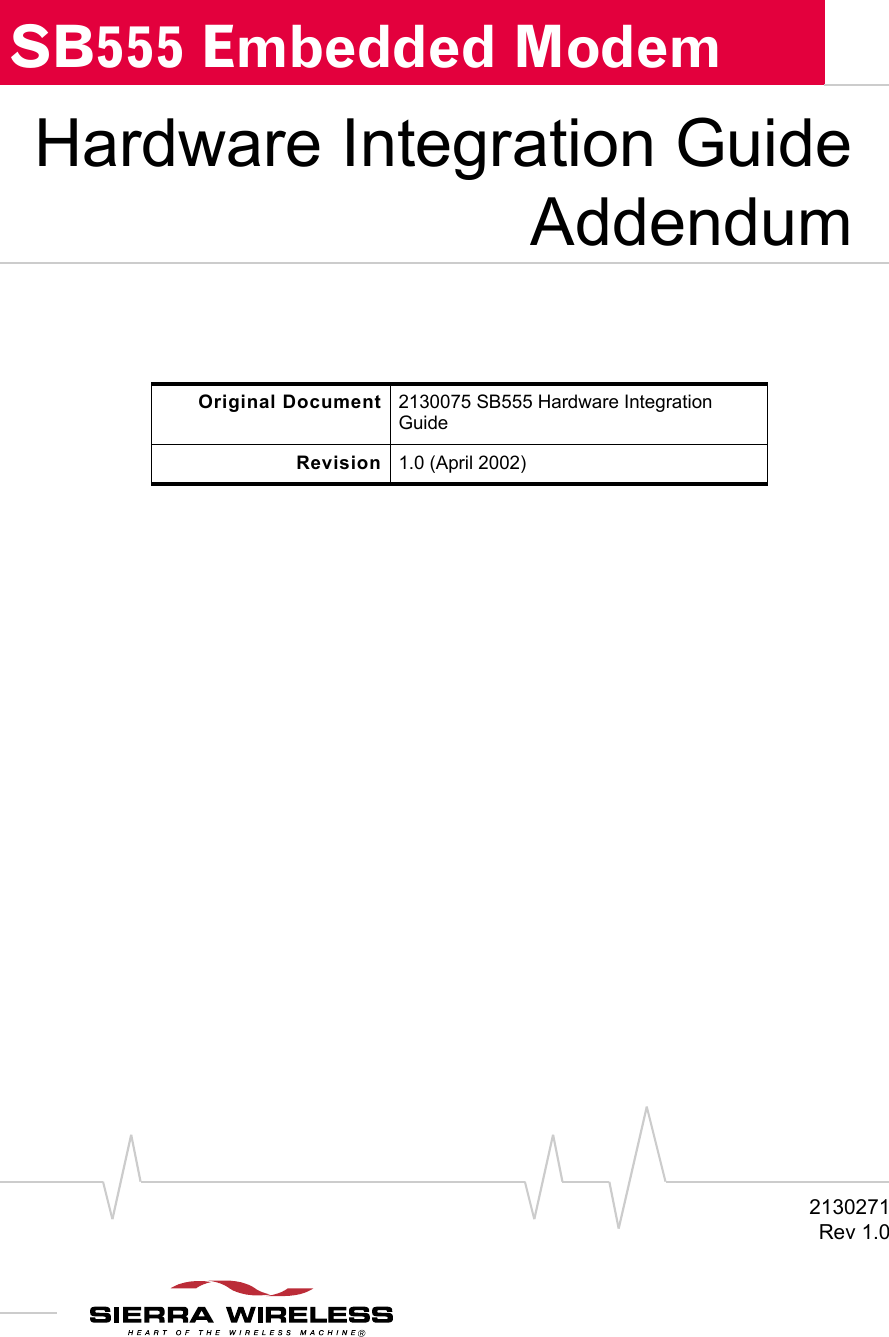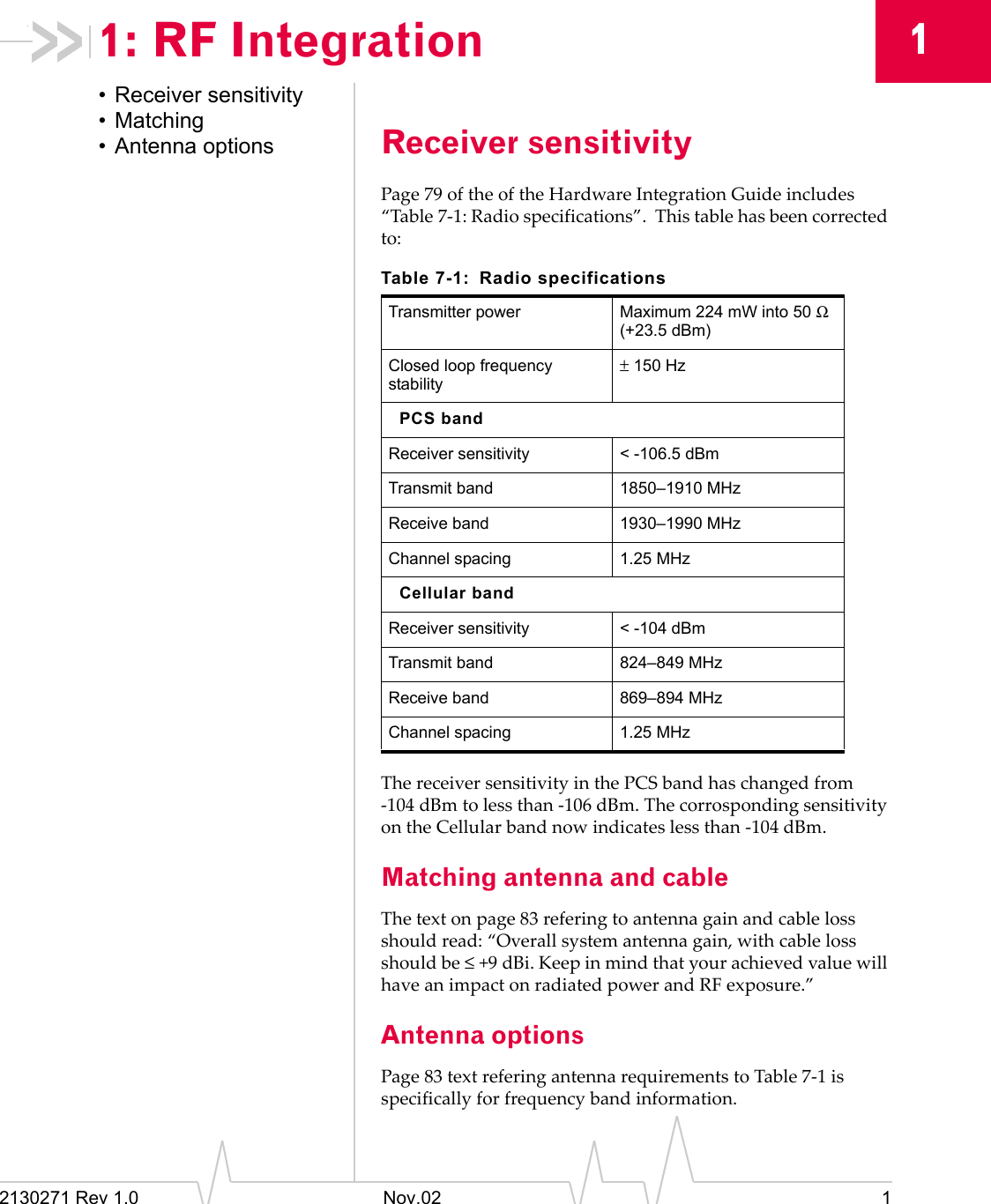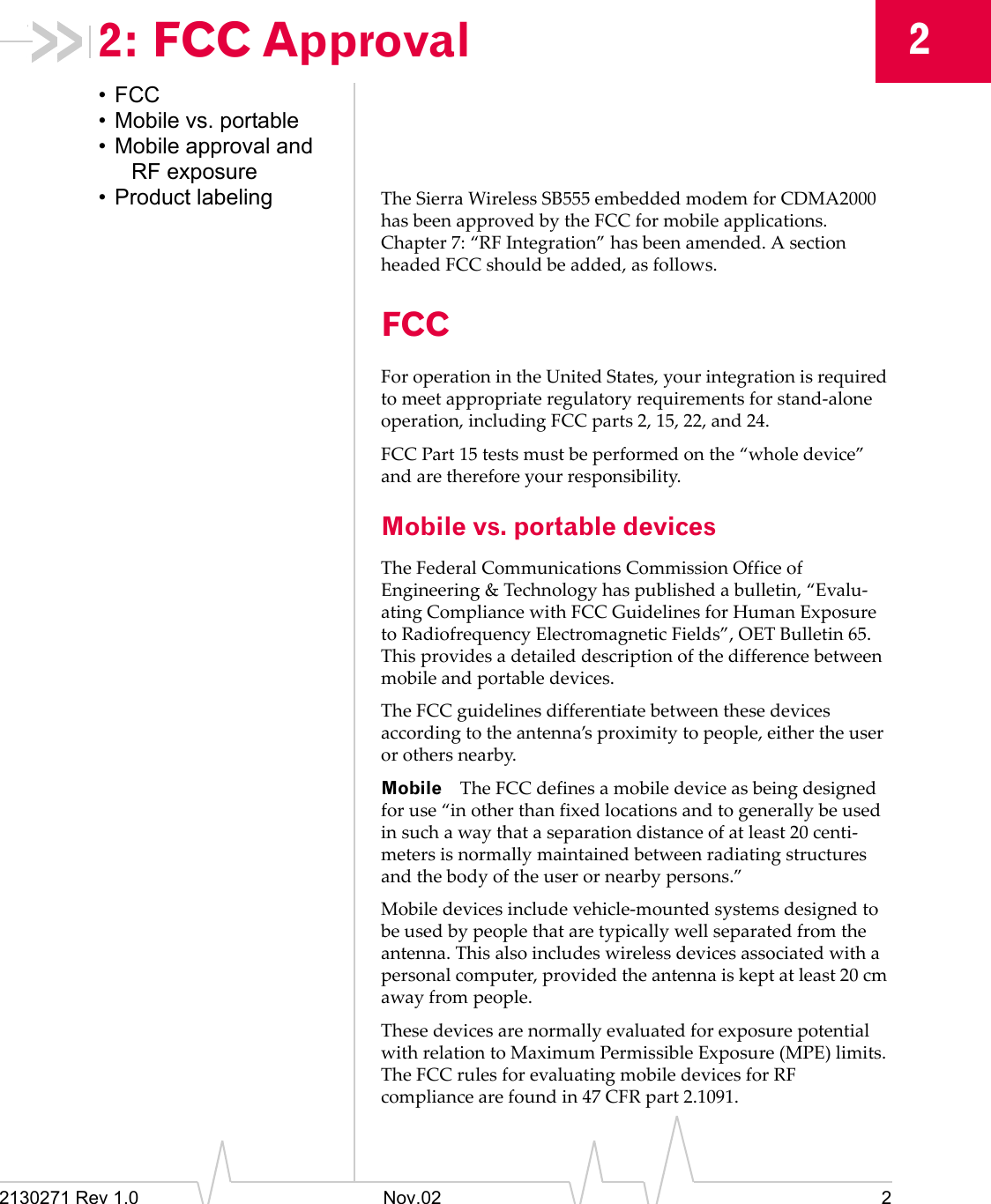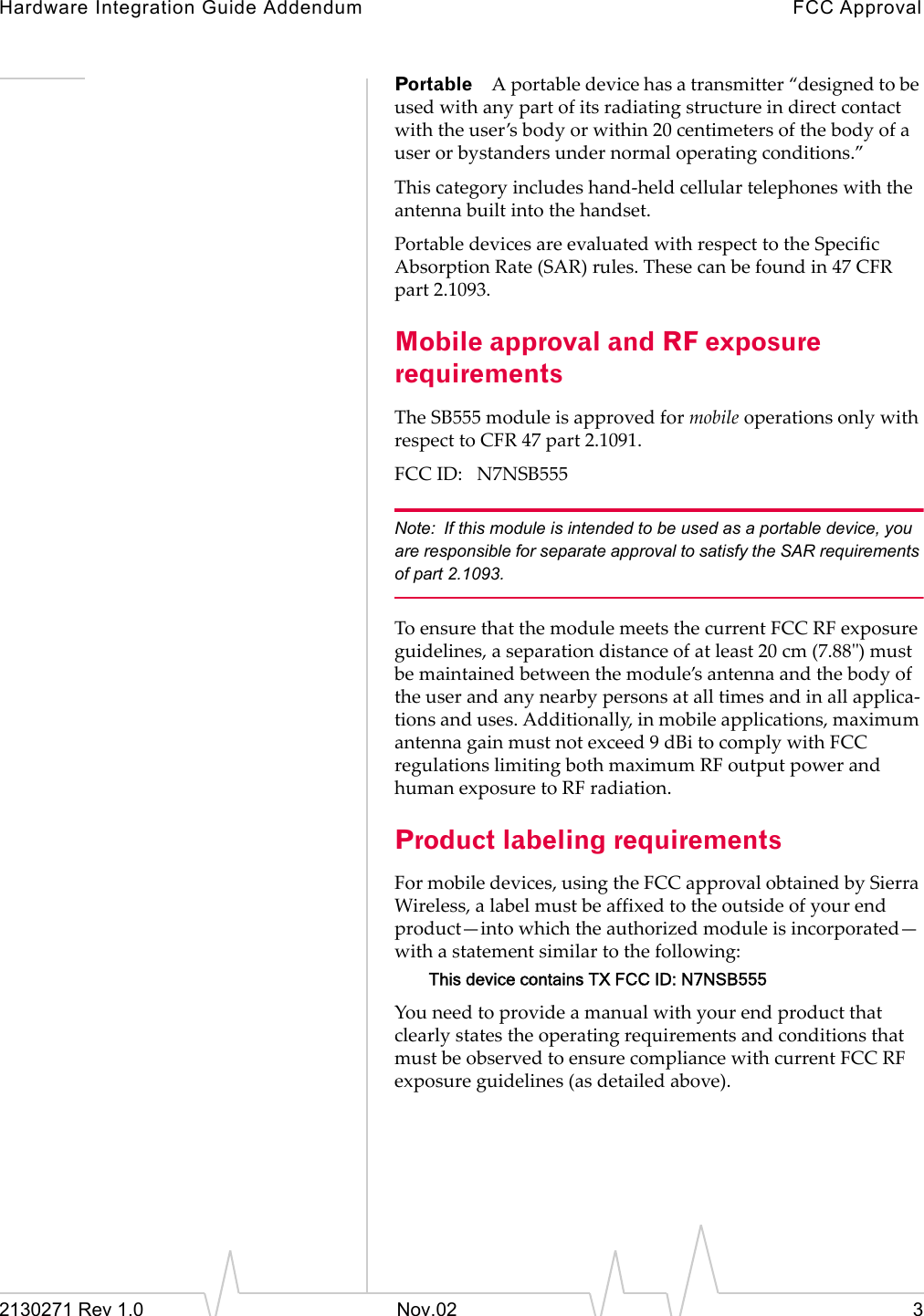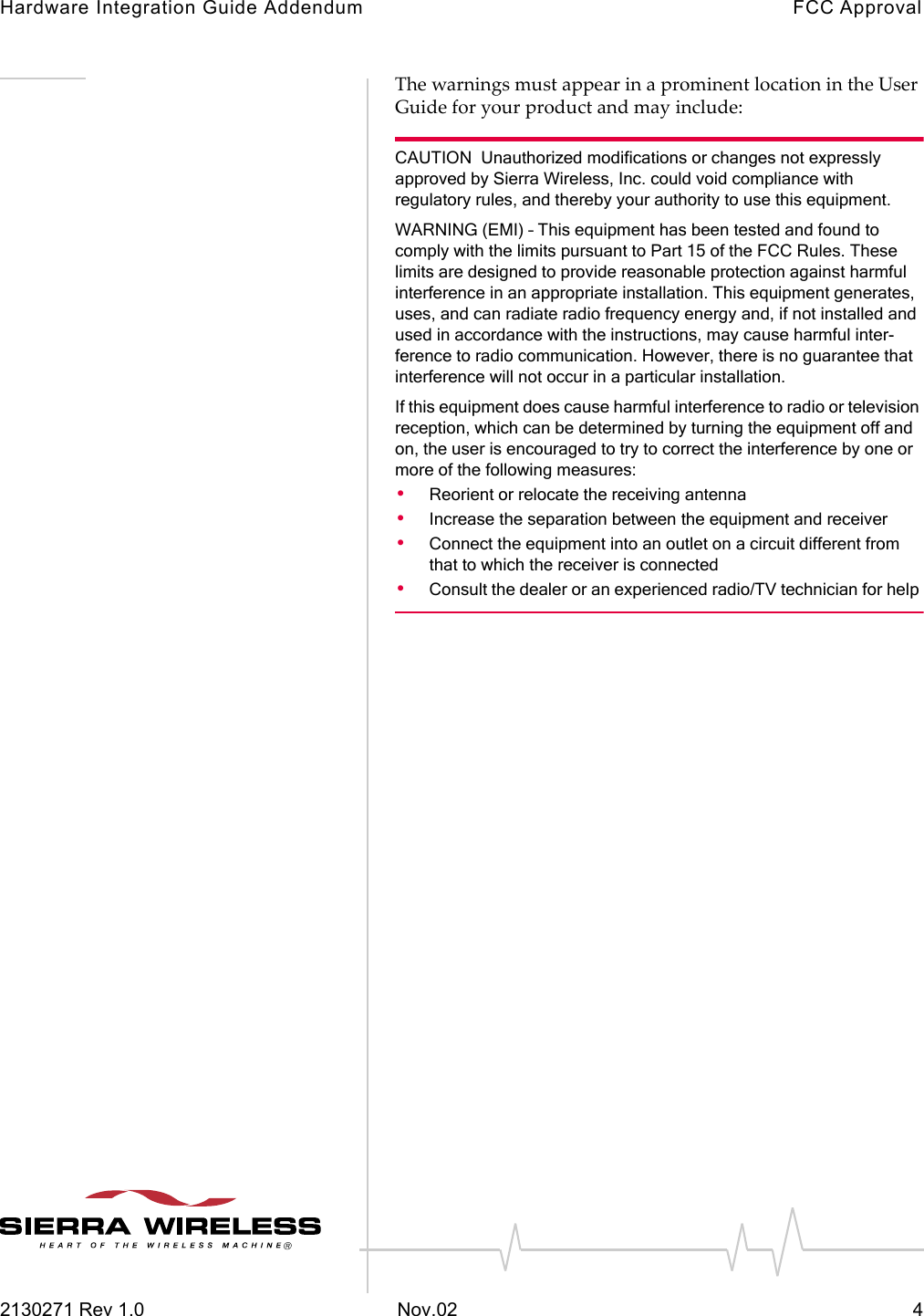Sierra Wireless SB555 SB555 Embedded Modem Module for Mobile Application User Manual 2130271 Hardware Add
Sierra Wireless Inc. SB555 Embedded Modem Module for Mobile Application 2130271 Hardware Add
Contents
- 1. Module installation manual
- 2. User Manual
Module installation manual
